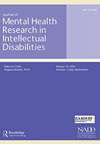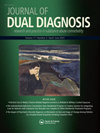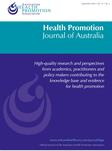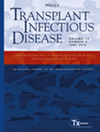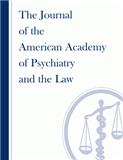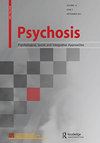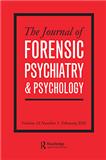Journal Of Forensic Psychiatry & Psychology杂志是一本国际优秀期刊,是一本未开放获取期刊。该杂志近三年影响因子分别为:2023年0.7、2022年1.4、2021年1.125。该杂志近三年CiteScore评价分区分别为:2023年2.2区、2022年1.8区、2021年1.8区。该刊专门致力于推进CRIMINOLOGY & PENOLOGY领域的研究,涵盖了CRIMINOLOGY & PENOLOGY领域的各个方面,汇集所有专家,促进CRIMINOLOGY & PENOLOGY领域的更好协作和信息共享。该期刊为CRIMINOLOGY & PENOLOGY领域的科研人员提供了一个高影响力的论坛,使该领域的科研人员、从业人员和学生能够接触到尖端的经验性调查分析、学术对话以及行业科研成果的最新发展。通过收录高质量的原创论文和评论论文,促进CRIMINOLOGY & PENOLOGY领域的应用与发展。该期刊还将该领域的创新与应用,以提高研究的质量和实用性。
Journal Of Forensic Psychiatry & Psychology是一本由Taylor & Francis出版社发行的知名CRIMINOLOGY & PENOLOGY期刊。该杂志社联系方式J. Forensic Psychiatry Psychol.。审稿过程是确保期刊质量的关键环节。Journal Of Forensic Psychiatry & Psychology杂志的审稿速度平均需要 。这一时间周期既体现了编辑部对稿件质量的严格把关,也反映了审稿专家对学术研究的尊重和支持。在这个过程中,作者们可以充分利用这段时间对自己的研究成果进行完善和优化,以提高论文的质量和影响力。如果您对该期刊感兴趣,并希望了解更多关于投稿流程、投稿要求和技巧的信息,您可以咨询本站的客服老师,我们将帮助您了解期刊的投稿要求、审稿流程以及可能遇到的问题,并根据您的具体情况提供相应的建议和解决方案。
| CiteScore | SJR | SNIP | CiteScore排名 | |||
|---|---|---|---|---|---|---|
| 2.2 | 0.363 | 0.677 | 学科类别 | 分区 | 排名 | 百分位 |
|
大类:大类:Psychology
小类:小类:ClinicalPsychology
|
Q3 | 171/311 | 45 | |||
|
大类:大类:Psychology
小类:小类:PsychiatryandMentalHealth
|
Q3 | 355/567 | 37 | |||
| 按JIF指标学科分区 | 收录子集 | 分区 | 排名 | 百分位 |
|---|---|---|---|---|
| 学科:CRIMINOLOGY & PENOLOGY | SSCI | Q4 | 88 / 113 | 22.6 |
| 学科:PSYCHIATRY | SSCI | Q4 | 238 / 276 | 13.9 |
| 按JCI指标学科分区 | 收录子集 | 分区 | 排名 | 百分位 |
|---|---|---|---|---|
| 学科:CRIMINOLOGY & PENOLOGY | SSCI | Q4 | 93 / 113 | 18.14 |
| 学科:PSYCHIATRY | SSCI | Q4 | 210 / 276 | 24.09 |
文章名称
引用次数
Popping the cultural bubble of violence risk assessment tools
6
Establishing a joint agency response to the threat of lone-actor grievance-fuelled violence
6
Building from the ground up: exploring forensic mental health staffs relationships with patients
5
The use of telepsychiatry within forensic practice: a literature review on the use of videolink - a ten-year follow-up
5
Perceived workplace adversity and correctional officer psychological well-being: an international examination of the impact of officer response styles
4
The impact of an intensive inpatient violent offender treatment programme on intermediary treatment targets, violence risk and aggressive behaviour in a sample of mentally disordered offenders
4
Least restrictive practice: its role in patient independence and recovery
3
Evaluating the utility of strength items when assessing the risk of young offenders
3
Red-teaming the panopticon (mobilising adaptive change in secure and forensic settings)
3
Evaluation of the use of pharmacological treatment with prisoners experiencing high levels of hypersexual disorder
3
